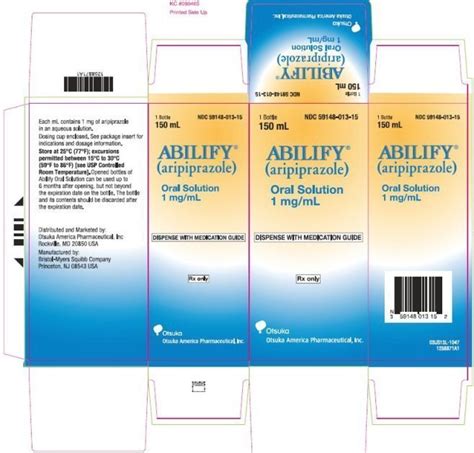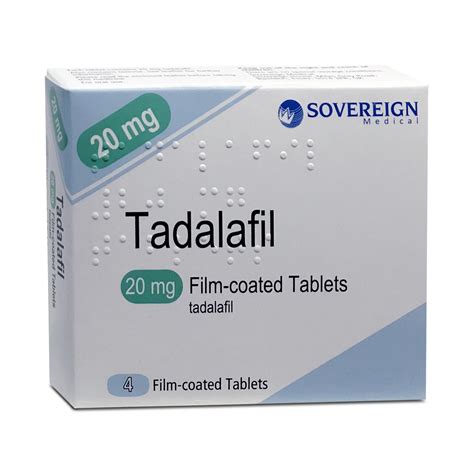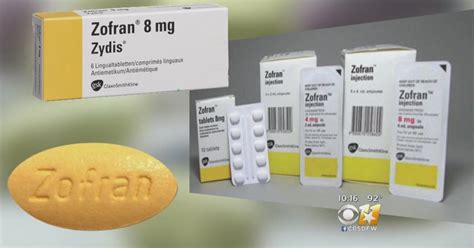Mu opioid agonist drugs
Author: h | 2025-04-08

Methadone is a full agonist with high activity at mu opioid partial agonist with low activity at mu opioid receptors. While

Mu-Opioid Agonists - an overview
Reverse the effects of an overdose. Insufficient duration of monitoring may put patients at risk.Contraindications for SuboxoneSUBOXONE sublingual film is contraindicated in patients with a history of hypersensitivity to buprenorphine or naloxone as serious adverse reactions, including anaphylactic shock, have been reported [see WARNINGS AND PRECAUTIONS]. Clinical Pharmacology for SuboxoneMechanism Of ActionSUBOXONE sublingual film contains buprenorphine and naloxone. Buprenorphine is a partial agonist at the mu-opioid receptor and an antagonist at the kappa-opioid receptor. Naloxone is a potent antagonist at mu opioid receptors and produces opioid withdrawal signs and symptoms in individuals physically dependent on full opioid agonists when administered parenterally.PharmacodynamicsSubjective EffectsComparisons of buprenorphine to full opioid agonists such as methadone and hydromorphone suggest that sublingual buprenorphine produces typical opioid agonist effects which are limited by a ceiling effect.In opioid-experienced subjects who were not physically dependent, acute sublingual doses of buprenorphine/naloxone tablets produced opioid agonist effects which reached a maximum between doses of 8 mg/2 mg and 16 mg/4 mg buprenorphine/naloxone.Opioid agonist ceiling-effects were also observed in a double-blind, parallel group, dose-ranging comparison of single doses of buprenorphine sublingual solution (1, 2, 4, 8, 16, or 32 mg), placebo and a full agonist control at various doses. The treatments were given in ascending dose order at intervals of at least one week to 16 opioid-experienced subjects who were not physically dependent. Both active drugs produced typical opioid agonist effects. For all measures for which the drugs produced an effect, buprenorphine produced a dose-related response. However, in each case, there was a dose that produced no further effect. In contrast, the highest dose of the full agonist control always produced the greatest effects. Agonist objective rating scores remained elevated for the higher doses of buprenorphine (8 mg to 32 mg) longer than for the lower doses and did not return to baseline until 48 hours after drug administration. The onset of effects appeared more rapidly with buprenorphine than with the full agonist control, with most doses nearing peak effect after 100 minutes for buprenorphine compared to 150 minutes for the full agonist control.Physiologic EffectsBuprenorphine in IV (2, 4, 8, 12 and
Interactions between mu and kappa opioid agonists in the
Tramadol derivatives.PharmacologyOpioids are known to mimic endogenous endorphins. Endorphins are responsible for analgesia (reducing pain), causing sleepiness, and feelings of pleasure. They can be released in response to pain, strenuous exercise, orgasm, or excitement. This mimicking of natural endorphins results in the drug's euphoric, analgesic (pain relief) and anxiolytic (anti-anxiety) effects.[5]Receptor typesOpioids act on the three main classes of opioid receptor in the nervous system, μ, κ, δ (mu, kappa, and delta).[6] Each opioid is measured by its agonistic or antagonistic effects towards the receptors, with the responses to the different receptor sub-types (e.g., μ1 and μ2) providing even more effects. Opioid receptors are found mainly within the brain, but also within the spinal cord and digestive tract.[7]Delta (δ)The delta receptor is responsible for the analgesia, antidepressant and convulsant effects as well as physical dependence.[6]Kappa (κ)The kappa receptor is responsible for the analgesia, anticonvulsant, dissociative and deliriant effects as well as dysphoria, neuroprotection and sedation.[6]Mu (μ)The mu receptor is responsible for analgesia, physical dependence, respiratory depression, euphoria, and possible vasodilation.[6]Agonists of mu opioid receptors produce sedative, euphoric, and anxiolytic effects largely through the interaction of the mu receptors with serotonin, dopamine, and norepinephrine. Activation of mu receptors allows for the disinhibition of serotonin and dopamine neurons by blocking the inhibitory effects of GABA on serotonin and dopamine neurons, thus increasing activity and release of serotonin and dopamine.[8] Mu receptors additionally inhibit the activity of norepinephrine neurons, leading to sedation, anxiolysis, and respiratory depression.[9]NociceptinThe nociceptin receptor is responsible for anxiety, depression,In vivo antinociception of potent mu opioid agonist
A lower risk of overdose compared to methadone and other full agonist opioids.4,5 It also means that opioid-dependent patients do not experience sedation or euphoria at the same rate that they might experience with more potent opioids, improving quality of life for patients with severe pain and reducing the reinforcing effects of opioids which can lead to drug-seeking behaviours.11Buprenorphine's high affinity, but low intrinsic activity for the mu-opioid receptor also means that if it is started in opioid-dependent individuals, it will displace the other opioids without creating an equal opioid effect and cause a phenomenon known as "precipitated withdrawal" which is characterized by a rapid and intense onset of withdrawal symptoms (i.e. anxiety, restlessness, gastrointestinal distress, diaphoresis, intense drug cravings, and tachycardia). Individuals must therefore be in a state of mild to moderate withdrawal before starting therapy with buprenorphine. Buprenorphine is commercially available as the brand name product Suboxone which is formulated in a 4:1 fixed-dose combination product along with naloxone, a non-selective competitive opioid receptor antagonist. Combination of an opioid agonist with an opioid antagonist may seem counterintuitive, however this combination with naloxone is intended to reduce the abuse potential of Suboxone, as naloxone is poorly absorbed by the oral route (and has no effect when taken orally), but would reverse the opioid agonist effects of buprenorphine if injected intravenously.14,22 TargetActionsOrganismAKappa-type opioid receptorantagonistHumansAMu-type opioid receptorpartial agonistHumansUDelta-type opioid receptorantagonistHumansUNociceptin receptoragonistHumansBioavailablity of buprenorphine/naloxone is very high following intravenous or subcutaneous administration, lower by the sublingual or buccal route, and very low when administered by the oral route. It is therefore provided as a sublingual tablet that is absorbed from the oral mucosa directly into systemic circulation.18 Clinical pharmacokinetic studies found that there was wide inter-patient variability in the sublingual absorption of buprenorphine and naloxone, but within subjects the variability was low.. Methadone is a full agonist with high activity at mu opioid partial agonist with low activity at mu opioid receptors. WhileMu Opioid Agonists Potentiate Amphetamine- and Cocaine
OverviewThe U.S. Food and Drug Administration has approved Suboxone 8 mg for treating a disorder which is caused by using opioids. This disorder is also called opioid use disorder or OUD. In this, there is a desire to use opioids and after discontinuation of opioids, the patient experiences withdrawal symptoms. This medicine consists of two components, such as buprenorphine and naloxone. Both of these act as generic variants and active ingredients in the branded medication known as Suboxone.It is a combination drug with a fixed dose in which naloxone is an opioid antagonist and buprenorphine is a half-opioid agonist. This medicine falls under the class of medicines known as opioid or narcotic pain relievers and is categorized as a controlled substance of Schedule III. It may cause dependency and misuse of the medicine. It is a prescription-only medicine that can be taken after a prescription from a doctor.Note: This medicine is approved for treating narcotic addiction and not be used as a pain analgesic.The Function of Suboxone 8 mg MedicineIn medication, buprenorphine is considered as a partial opioid agonist that binds with the mu-opioid receptor (high affinity) and has less affinity to bind with the kappa-opioid receptor as the antagonist. Whereas Naloxone is a pure antagonist, after binding to the mu-receptor, it blocks the craving, stabilizing and withdrawing opioid receptors. This medicine shows a ceiling effect which reverses and prevents the effects of other opioids. Suboxone helps to treat opioid abuse.Dose Forms & Dosage StrengthThe drug has two forms, such as a sublingual tablet and sublingual and buccal film. This medication can be taken by placing the medication beneath the tongue or between the cheek and gum.Suboxone 8 mg tablet is imprinted with N8 (logo), orange-colored, and hexagonal-shaped (six-sided).Its sublingual film has a rectangular shape, is orange-colored, and has anLocal administration of mu or kappa opioid agonists
Or contributory role in the development of the hepatic abnormality in some cases. Liver function tests, prior to initiation of treatment is recommended to establish a baseline. Periodic monitoring of liver function during treatment is also recommended. A biological and etiological evaluation is recommended when a hepatic event is suspected. Depending on the case, buprenorphine and naloxone sublingual tablets may need to be carefully discontinued to prevent withdrawal signs and symptoms and a return by the patient to illicit drug use, and strict monitoring of the patient should be initiated.22Orthostatic HypotensionLike other opioids, buprenorphine and naloxone sublingual tablets may produce orthostatic hypotension in ambulatory patients.Elevation of Cerebrospinal Fluid PressureBuprenorphine, like other opioids, may elevate cerebrospinal fluid pressure and should be used with caution in patients with head injury, intracranial lesions, and other circumstances when cerebrospinal pressure may be increased. Buprenorphine can produce miosis and changes in the level of consciousness that may interfere with patient evaluation.Elevation of Intracholedochal PressureBuprenorphine has been shown to increase intracholedochal pressure, as do other opioids, and thus should be administered with caution to patients with dysfunction of the biliary tract.Buprenorphine is a partial agonist at the mu-opioid receptor and an antagonist at the kappa-opioid receptor. It demonstrates a high affinity for the mu-opioid receptor but has lower intrinsic activity compared to other full mu-opioid agonists such as heroin, oxycodone, or methadone.15 This means that buprenorphine preferentially binds the opioid receptor and displaces lower affinity opioids without activating the receptor to a comparable degree. Clinically, this results in a slow onset of action and a clinical phenomenon known as the "ceiling effect" where once a certain dose is reached buprenorphine's effects plateau. This effect can be beneficial, however, as dose-related side effects such as respiratory depression, sedation, and intoxication also plateau at around 32mg, resulting inInteraction of mu-opioid receptor agonists and antagonists
Patients may require treatment indefinitely. Advise patients of the potential to relapse to illicit drug use following discontinuation of opioid agonist/partial agonist medication-assisted treatment. Partial opioid agonist and mixed opioid agonist/antagonist overdose: Reversal of partial opioid agonists or mixed opioid agonist/antagonists (eg, buprenorphine, pentazocine) may be incomplete and large doses of naloxone may be required. Withdrawal: Concurrent use of opioid agonist/antagonist analgesics may precipitate withdrawal symptoms and/or reduced analgesic efficacy in patients following prolonged therapy with mu opioid agonists. Abrupt discontinuation following prolonged use may also lead to withdrawal symptoms and is not recommended; taper dose gradually when discontinuing. Treatment of opioid dependence with buprenorphine/naloxone should not be started until effects of withdrawal are evident. Monitoring ParametersLiver function tests (prior to initiation and periodically during therapy); respiratory and mental status; CNS depression; blood pressure; symptoms of withdrawal; signs of addiction, abuse, or misuse; signs or symptoms of hypogonadism or hypoadrenalism (Brennan 2013). PregnancyPregnancy ConsiderationsBuprenorphine and naloxone can be detected in cord blood following maternal use of sublingual tablets; cord blood concentrations of buprenorphine and naloxone correlate with maternal serum levels (Weigand 2016).Prolonged use of opioids during pregnancy can result in neonatal opioid withdrawal syndrome, which may be life-threatening if not recognized and treated and requires management according to protocols developed by neonatology experts. If opioid use is required for a prolonged period in a pregnant woman, advise the patient of the risk of neonatal opioid withdrawal syndrome and ensure appropriate treatment will be available.Opioid agonist pharmacotherapy is recommended when treating opioid use disorder in pregnancy; however, use of buprenorphine monotherapy is currently preferred due to limited safety data with the buprenorphine/naloxone combination product (ACOG 711 2017; SAMHSA 2018). Treatment with the combination product should not be initiated during pregnancy (SAMHSA 2018).Refer to individual monographs for additional information.Pregnancy testing is recommended. Methadone is a full agonist with high activity at mu opioid partial agonist with low activity at mu opioid receptors. While CHEBI: - morphine mu-opioid receptor agonist. A compound that exhibits agonist activity at the mu -opioid receptor. plant metabolite opioid analgesic.Comments
Reverse the effects of an overdose. Insufficient duration of monitoring may put patients at risk.Contraindications for SuboxoneSUBOXONE sublingual film is contraindicated in patients with a history of hypersensitivity to buprenorphine or naloxone as serious adverse reactions, including anaphylactic shock, have been reported [see WARNINGS AND PRECAUTIONS]. Clinical Pharmacology for SuboxoneMechanism Of ActionSUBOXONE sublingual film contains buprenorphine and naloxone. Buprenorphine is a partial agonist at the mu-opioid receptor and an antagonist at the kappa-opioid receptor. Naloxone is a potent antagonist at mu opioid receptors and produces opioid withdrawal signs and symptoms in individuals physically dependent on full opioid agonists when administered parenterally.PharmacodynamicsSubjective EffectsComparisons of buprenorphine to full opioid agonists such as methadone and hydromorphone suggest that sublingual buprenorphine produces typical opioid agonist effects which are limited by a ceiling effect.In opioid-experienced subjects who were not physically dependent, acute sublingual doses of buprenorphine/naloxone tablets produced opioid agonist effects which reached a maximum between doses of 8 mg/2 mg and 16 mg/4 mg buprenorphine/naloxone.Opioid agonist ceiling-effects were also observed in a double-blind, parallel group, dose-ranging comparison of single doses of buprenorphine sublingual solution (1, 2, 4, 8, 16, or 32 mg), placebo and a full agonist control at various doses. The treatments were given in ascending dose order at intervals of at least one week to 16 opioid-experienced subjects who were not physically dependent. Both active drugs produced typical opioid agonist effects. For all measures for which the drugs produced an effect, buprenorphine produced a dose-related response. However, in each case, there was a dose that produced no further effect. In contrast, the highest dose of the full agonist control always produced the greatest effects. Agonist objective rating scores remained elevated for the higher doses of buprenorphine (8 mg to 32 mg) longer than for the lower doses and did not return to baseline until 48 hours after drug administration. The onset of effects appeared more rapidly with buprenorphine than with the full agonist control, with most doses nearing peak effect after 100 minutes for buprenorphine compared to 150 minutes for the full agonist control.Physiologic EffectsBuprenorphine in IV (2, 4, 8, 12 and
2025-03-21Tramadol derivatives.PharmacologyOpioids are known to mimic endogenous endorphins. Endorphins are responsible for analgesia (reducing pain), causing sleepiness, and feelings of pleasure. They can be released in response to pain, strenuous exercise, orgasm, or excitement. This mimicking of natural endorphins results in the drug's euphoric, analgesic (pain relief) and anxiolytic (anti-anxiety) effects.[5]Receptor typesOpioids act on the three main classes of opioid receptor in the nervous system, μ, κ, δ (mu, kappa, and delta).[6] Each opioid is measured by its agonistic or antagonistic effects towards the receptors, with the responses to the different receptor sub-types (e.g., μ1 and μ2) providing even more effects. Opioid receptors are found mainly within the brain, but also within the spinal cord and digestive tract.[7]Delta (δ)The delta receptor is responsible for the analgesia, antidepressant and convulsant effects as well as physical dependence.[6]Kappa (κ)The kappa receptor is responsible for the analgesia, anticonvulsant, dissociative and deliriant effects as well as dysphoria, neuroprotection and sedation.[6]Mu (μ)The mu receptor is responsible for analgesia, physical dependence, respiratory depression, euphoria, and possible vasodilation.[6]Agonists of mu opioid receptors produce sedative, euphoric, and anxiolytic effects largely through the interaction of the mu receptors with serotonin, dopamine, and norepinephrine. Activation of mu receptors allows for the disinhibition of serotonin and dopamine neurons by blocking the inhibitory effects of GABA on serotonin and dopamine neurons, thus increasing activity and release of serotonin and dopamine.[8] Mu receptors additionally inhibit the activity of norepinephrine neurons, leading to sedation, anxiolysis, and respiratory depression.[9]NociceptinThe nociceptin receptor is responsible for anxiety, depression,
2025-04-02OverviewThe U.S. Food and Drug Administration has approved Suboxone 8 mg for treating a disorder which is caused by using opioids. This disorder is also called opioid use disorder or OUD. In this, there is a desire to use opioids and after discontinuation of opioids, the patient experiences withdrawal symptoms. This medicine consists of two components, such as buprenorphine and naloxone. Both of these act as generic variants and active ingredients in the branded medication known as Suboxone.It is a combination drug with a fixed dose in which naloxone is an opioid antagonist and buprenorphine is a half-opioid agonist. This medicine falls under the class of medicines known as opioid or narcotic pain relievers and is categorized as a controlled substance of Schedule III. It may cause dependency and misuse of the medicine. It is a prescription-only medicine that can be taken after a prescription from a doctor.Note: This medicine is approved for treating narcotic addiction and not be used as a pain analgesic.The Function of Suboxone 8 mg MedicineIn medication, buprenorphine is considered as a partial opioid agonist that binds with the mu-opioid receptor (high affinity) and has less affinity to bind with the kappa-opioid receptor as the antagonist. Whereas Naloxone is a pure antagonist, after binding to the mu-receptor, it blocks the craving, stabilizing and withdrawing opioid receptors. This medicine shows a ceiling effect which reverses and prevents the effects of other opioids. Suboxone helps to treat opioid abuse.Dose Forms & Dosage StrengthThe drug has two forms, such as a sublingual tablet and sublingual and buccal film. This medication can be taken by placing the medication beneath the tongue or between the cheek and gum.Suboxone 8 mg tablet is imprinted with N8 (logo), orange-colored, and hexagonal-shaped (six-sided).Its sublingual film has a rectangular shape, is orange-colored, and has an
2025-03-17